The Fourth Industrial Revolution
You could be forgiven for not realising you’re taking part in a revolution. It’s global and it’s all encompassing, and it’s not the pandemic. You are, and you need to realise it.

It’s said that the first requirement of addressing a problem is to realise that you have one. This revolution is accelerating the rate of change, and understanding not just that rate, but also what’s likely to be affected by it, is going to be crucial not just to ourselves but everything else around us.
It’s easier to understand this when you’re reading about it in a history book (remember those?), but not so easy when you’re right in it.
For this knowledge to be at all helpful, we must be aware of it. To understand what’s going on so you take an active part, or at least to be an interested observer and learn from it as it progresses.
If this is the Fourth …?
If this is the Fourth Industrial Revolution (4IR), what were the first three? Understanding just enough of the history of where we’ve come from will help unravel the consequences of where we’re heading, and what the possible consequences may be for ourselves, our economies and society. This isn’t simply an exercise in economic history but a critical inquiry to help us design solutions for our clients in the future.
We don’t work in a bubble. We exist to communicate with real people with real challenges and opportunities. These challenges and opportunities are generated directly because of the revolution we’re in. Understanding the direction of travel is going to give us an insight into how to navigate through them in the most effective way.
So buckle in! This short ride just might be quite interesting.

The First Industrial Revolution (1IR)
Water and steam to mechanise production

The Second Industrial Revolution (2IR)
Electric power

The Third Industrial Revolution (3IR)
Electronics and information technology

The Fourth Industrial Revolution (4IR)
The fusion of technologies, blurring the lines between the physical, digital and biological spheres, and building on the 3IR
What’s in the Mix?
Revolutions seem to envelop and affect all areas of our economies and societies. But the drivers of them can be quite specific.
1IR
With the 1IR it was the power, scalability, precision and universality of steam-powered machines that transformed the productive capabilities of whole economies. That universality is underlined by the fact that our power stations still use the basic tenets of steam power today. All that’s changed is the technology that converts power to electricity, and the source of heat.
2IR
In the 2IR, rather than steam supplying the ‘push’ it was electric motors. The ‘revolutionary’ factor, though, was the portability of the means of transmission and the separation of power generation to power delivery. Also, that electric power could be scaled up and down making electric-powered machines customisable to a whole new range of products.
3IR
The 3IR took that electric power and channelled it into calculating machines and electronic storage, pioneered by Ada Lovelace (daughter of Lord Byron) and then Charles Babbage. Not forgetting that the foundations laid by Ada and Charles led directly to the invention of the Bombe calculating machine by Alan Turing, which then helped crack the Enigma encryption devices during the second world war. Cause and effect.
4IR
The 4IR grabs the 3IR ball and takes it to the next level. Like a self-replicating organism the 4IR, fuelled by advances in information technology, materials science, data analytics and biotechnology, it has created new products and services at a rate not seen before. This isn’t just a change in the type of ‘things’ being produced, but rather it’s about the rate of change happening exponentially. It’s the velocity and scope of change that makes this revolution different, and therefore most difficult to predict what will come out the other end.
The 4IR grabs the 3IR ball and takes it to the next level
Across each of these revolutions it was technology that was the key component. Tools and techniques that were harnessed and improved to increase our ability to produce new things.
This is disrupting almost every industry in every country, transforming entire systems of production, management and governance.
The drivers for these new capabilities are a mixture of:
- Billions of people connected, and the prevalence of mobile devices
- Unprecedented computer processing power and storage, and access to it
- Access to more information and knowledge than ever before
- Rapid advances in:
- Artificial intelligence and machine learning
- Robotics
- Internet of things (IoT)
- Autonomous vehicles
- 3-D printing
- Nanotechnology
- Biotechnology
- Materials science
- Energy generation and storage
- Quantum computing.
Billions of people connected, and the prevalence of mobile devices.
Unprecedented computer processing power and storage.
Access to more information and knowledge than ever before.
So What?
Without wanting to go too deep, the apparently seismic changes in our societies we’re currently seeing – environmental, scientific, cultural, economic, political and commercial – are likely a result of the pace of change and our inability to manage it or adapt to it.
The vision of what’s possible has exploded. This has two trajectories. On the positive side, it creates new opportunities for wealth creation, consumption and production. Greater access to technology and knowledge – cloud provision and online information – has disrupted the provision of services away from the big few providers, to the many; agile, innovative competitors who can oust established incumbents faster than ever by improving quality, speed and price.
It also has a negative trajectory, such as the move away from traditional retail to online shopping, the impact on the environment, increased threats to our security and privacy, and the exacerbation of wealth differential.
There are four main effects on business:
- Customer expectations – improving how customers (businesses or consumers) are served
- Product enhancement – physical products can be enhanced with digital capabilities
- Collaborative innovation – customer experiences, data-driven services, asset performance through analytics, requiring new forms of collaboration
- Organisational forms – global platforms and other new business models means that talent, culture and organisational forms will have to be rethought. We’re in the middle of such an organisational transformation as remote working cascades into the mainstream.
The 4IR is about enhancing the capabilities of the 3IR through technological fusion and innovation, forcing companies to re-examine the way they do business. We need to understand the changing environment, challenge the assumptions of operating teams, and continue (although faster) to innovate.
People
The 4IR will also change the nature of identity and issues associated with it. Driven by technological development in biotechnology, medical tools, techniques, materials science and production, we’re able to augment, change or repair human bodies to an extent never seen before. This in turn has changed the conversation on gender identity, physical capabilities and artistic expression. And with physical and virtual augmentation, the real and digital worlds are starting to blur.
The Gen Xs and Gen Ys are swapping places right now. The Ys will soon start to call the shots. But the Zs, who are being swept along most rapidly by the 4IR, will be next. These generational differences are also bubbling to the surface in expectation of work; how, where and why we do it. The Ys are already showing signs of wanting to be happy in their jobs rather than commanding greater salaries. Quality is replacing quantity.
Promise and a peril. It all comes down to people and values
Final Thought
Our challenge, from today, right now, is to try to tame and manage this furious pace and nature of change. Change for its own sake can have unforeseen and often unpleasant consequences. We need to understand the nature of this revolution and make sure we put in place frameworks and structures that help us stay in control of it. As a business operation there are huge opportunities for us to take advantage of, from creating a positive and efficient digital workplace that can bring the best out of all of us. And to make sure we do so in a safe and secure physical and digital environment. As a marketing organisation we need to understand what the future, near and far, will look like to give our clients the insights and services they need.
In the same way we’ve responded rapidly and decisively as a business to the pandemic, and helped our clients do the same with their brands, we need to understand the short, medium and long-term impact of these seismic changes. In one respect, the tools and techniques we’ve already learned as part of the 4IR have helped us in our current situation.
As the World Economic Forum says, there’s a ‘promise and a peril. It all comes down to people and values.” If we can’t understand what’s going on and why, we’ll inevitably be thrown off this perilous revolution wave. But if we can understand the dynamics and drivers, we can not only ride this wave but also help direct where it goes. If we can manage that, then not only will it benefit us as individuals but also as an organisation.






